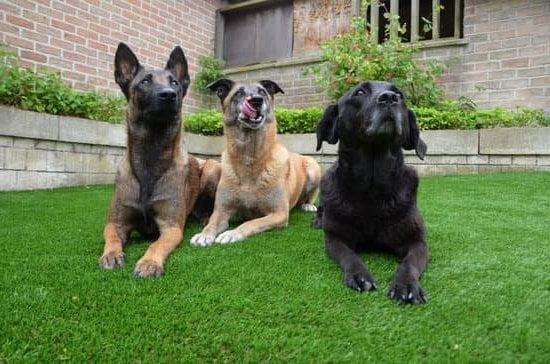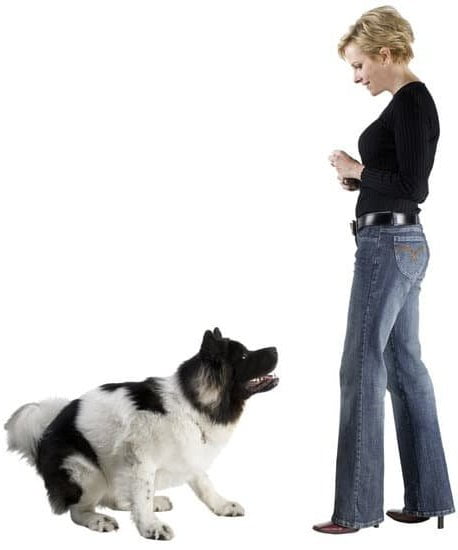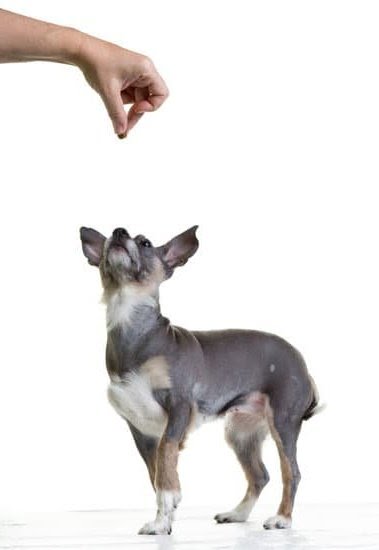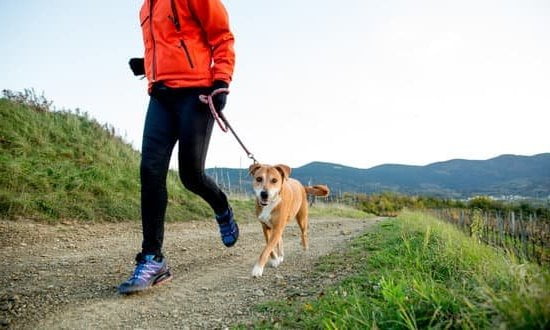Are you asking yourself, “How can I train my dog to stop chewing?” Chewing is a natural behavior for dogs, but it can become a problem when they target your favorite shoes or furniture. Understanding why dogs chew is crucial in addressing and preventing this issue. It could be due to teething, boredom, anxiety, curiosity, or even hunger. By recognizing the underlying reasons behind their chewing habits, you can effectively train your dog to stop this behavior.
Chewing can pose dangers for dogs as it may lead to ingesting harmful objects or substances, causing serious health issues. It’s essential to identify the signs that your dog has a chewing problem. This includes finding chewed up items around the house, furniture with bite marks, or even injuries from sharp objects they’ve chewed on. Recognizing these signs early on will help you address the behavior before it escalates.
Training techniques play a crucial role in teaching your dog to stop chewing. Utilizing positive reinforcement methods and redirection strategies can be effective ways to modify their behavior positively. Additionally, providing ample exercise and mental stimulation, offering appropriate chew toys and treats, and addressing underlying issues like separation anxiety or boredom are key steps in preventing unwanted chewing habits in your furry friend.
The Dangers of Chewing for Dogs
Damage to Personal Belongings
Chewing can pose various risks to dogs, as well as their owners. One of the primary dangers of chewing for dogs is the potential damage it can cause to personal belongings in the household. From furniture and shoes to electrical cords and household items, a dog’s chewing behavior can result in costly replacements and repairs. It is essential to address this issue promptly to prevent any further destruction.
Health Risks for Dogs
In addition to property damage, chewing can also have serious health risks for dogs. When dogs chew on inappropriate objects, they may ingest harmful materials that can lead to intestinal blockages or poisoning. For example, if a dog chews on sharp objects or toxic substances, it can result in injuries or illnesses that require immediate medical attention. Understanding these health risks is crucial in taking proactive measures to prevent them from occurring.
Behavioral Problems in Dogs
Furthermore, excessive chewing in dogs can indicate underlying behavioral issues that need to be addressed. Dogs may resort to chewing when they are anxious, bored, or seeking attention. If left unchecked, this behavior may escalate into more serious problems, such as aggression or compulsive behaviors. Recognizing the dangers associated with chewing can help pet owners intervene effectively and provide their dogs with the necessary training and support they need.
Signs Your Dog Has a Chewing Problem
Dogs chew for a variety of reasons, including teething, boredom, anxiety, or simply out of curiosity. Understanding why dogs chew is essential in addressing the behavior effectively.
If your furry friend is constantly chewing on furniture, shoes, or other items in your home, it’s important to recognize that this may be a sign of an underlying issue that needs to be addressed. By identifying the root cause of your dog’s chewing behavior, you can then implement the appropriate training techniques to help them stop.
One of the dangers of chewing for dogs is the risk of ingesting harmful objects or substances. Chewing on certain items can lead to choking hazards or intestinal blockages if pieces are swallowed. Additionally, some household items may be toxic to dogs if ingested. This makes it crucial to address any chewing problems promptly and provide alternative outlets for your dog’s natural chewing instincts.
If you’re wondering how you can train your dog to stop chewing on inappropriate items, there are several effective techniques you can try. Positive reinforcement is key when training your dog to stop unwanted behaviors like chewing. By rewarding good behavior with treats or praise, you can encourage your dog to make positive choices. Additionally, redirecting your dog’s focus with appropriate chew toys and engaging in plenty of exercise and mental stimulation can help prevent excessive chewing.
| Training Techniques | Examples |
|---|---|
| Positive Reinforcement | Rewarding good behavior with treats or praise |
| Redirection Strategies | Using chew toys to redirect focus from inappropriate items |
| Preventing Chewing | Providing exercise and mental stimulation as alternatives to chewing |
How Chewing Helps Dogs
Dogs have an instinctual need to chew, which is actually a natural behavior that serves various purposes for them. Chewing helps dogs to keep their teeth clean and healthy by removing tartar and plaque buildup. It also provides mental stimulation and helps to relieve stress and anxiety. Additionally, chewing can satisfy a dog’s natural urge to explore and interact with their environment.
To understand how chewing helps dogs, consider the following reasons:
- Teething: Puppies chew as a way to alleviate the discomfort of teething, much like human babies do.
- Boredom: Dogs may chew out of boredom, especially if they are not getting enough physical exercise or mental stimulation.
- Anxiety: Chewing can be a coping mechanism for dogs experiencing separation anxiety or other forms of stress.
While understanding the reasons why dogs chew is important, it is equally crucial for pet owners to provide appropriate outlets for this behavior. By recognizing how chewing benefits dogs, you can tailor your approach to addressing any excessive or destructive chewing habits in a positive and effective manner. Remember that training your dog to stop chewing requires patience, consistency, and understanding of their needs.
Training Techniques to Stop Chewing
Chewing is a natural behavior for dogs, but it can become problematic if they start chewing on furniture, shoes, or other items in the household. So, how can I train my dog to stop chewing? One effective technique is to provide plenty of appropriate chew toys and treats to redirect their chewing behavior. By offering them alternatives that are acceptable to chew on, you can help discourage them from destroying your belongings.
Consistency is key when training your dog to stop chewing. Whenever you catch your dog chewing on something they shouldn’t be, firmly say “no” and immediately replace the item with a chew toy. Praise them when they chew on the toy instead, reinforcing that this behavior is preferred. Over time, they will learn what is acceptable to chew on and what isn’t.
Another helpful technique is to use bitter tasting sprays or deterrents on items you don’t want your dog to chew on. These products have a taste that dogs find unpleasant, helping to deter them from gnawing on furniture or other forbidden objects. It’s important to reapply these sprays regularly and especially after cleaning or dusting the surfaces where your dog may have been tempted to chew.
| Chewing Training Technique | Effectiveness |
|---|---|
| Providing Chew Toys and Treats | Highly Effective |
| Using Bitter Tasting Sprays | Effective |
Remember that training takes time and patience, so be consistent in your approach and reward good behavior. With dedication and the right techniques, you can successfully train your dog to stop chewing on inappropriate items.
Positive Reinforcement for Chewing Behaviors
Positive reinforcement is a powerful tool when it comes to training your dog to stop chewing on inappropriate items. By rewarding your dog for good behavior, such as chewing on their toys or designated chew items, you are reinforcing the behavior you want to see.
This can be achieved through verbal praise, treats, or toys that your dog enjoys. Positive reinforcement helps create a strong association between the desired behavior and a pleasant outcome, making your dog more likely to repeat the behavior in the future.
When using positive reinforcement to address chewing behaviors, consistency is key. Make sure to reward your dog every time they choose to chew on their toys instead of household items. This will help reinforce the desired behavior and teach your dog what is acceptable to chew on.
Additionally, be patient and understanding with your pup as they learn new habits. It may take some time for them to fully grasp the concept, so continue to provide praise and rewards whenever they make the right choice.
In addition to positive reinforcement, it is important to provide adequate supervision and management when training your dog to stop chewing. Keep tempting items out of reach and provide plenty of appropriate chew toys for your furry friend.
Remember that each dog is unique, so it may take some trial and error to find the best approach that works for your pet. With patience, consistency, and positive reinforcement, you can successfully train your dog to stop destructive chewing behaviors and create a harmonious living environment for both you and your canine companion.
Redirection Strategies for Chewing
Chewing is a natural behavior for dogs, but it can become problematic when they target items they shouldn’t be chewing on. Redirection strategies can be an effective way to train your dog to stop chewing on inappropriate objects. By redirecting their focus onto more appropriate items, you can help curb unwanted chewing behaviors. Here are some strategies you can implement:
- Provide plenty of chew toys: Ensure your dog has access to a variety of chew toys that are safe and appropriate for their size and breed. Encourage them to chew on these toys by offering them as alternatives to household items.
- Supervise your dog: Keep a close eye on your dog, especially during times when they are most likely to engage in chewing behavior, such as when they are bored or anxious. If you catch them in the act of chewing on something they shouldn’t be, redirect their attention to a chew toy.
- Use deterrent sprays: Consider using bitter-tasting sprays designed to deter dogs from chewing on certain objects. Apply these sprays to items that are off-limits and offer praise or treats when your dog chooses not to chew on them.
Dogs learn through association, so it’s important to consistently reinforce positive behaviors and redirect negative ones. By implementing redirection strategies for chewing, you can help guide your dog towards more appropriate chewing habits and prevent damage to your belongings. Remember that patience and consistency are key when training your dog to stop destructive chewing behaviors.
- Set up “chew stations”: Create designated areas in your home where it’s okay for your dog to chew, such as a specific corner with a variety of chew toys. Encourage them to use these stations by offering praise and rewards when they choose the correct items.
- Engage in interactive play: Spend quality time playing with your dog using interactive toys that stimulate their mind and body. This can help prevent boredom-related chewing by providing mental stimulation and physical exercise.
- Consult a professional trainer: If you’re struggling with how to train your dog to stop chewing despite trying various techniques, consider seeking guidance from a professional dog trainer. They can assess the situation and provide tailored advice based on your specific needs and challenges.
Preventing Chewing With Exercise and Mental Stimulation
One effective way to train your dog to stop chewing is by providing them with enough physical exercise and mental stimulation. Dogs, like humans, need regular exercise to stay healthy and happy. A tired dog is less likely to engage in destructive behaviors such as chewing. Make sure your furry friend gets plenty of walks, playtime, and interactive activities to burn off excess energy.
In addition to physical exercise, mental stimulation is also crucial for preventing chewing. Dogs are intelligent animals that need mental challenges to keep their minds active. You can provide mental stimulation through puzzle toys, obedience training, or interactive games that require them to think and problem-solve. Engaging your dog’s brain will help prevent boredom, which is a common reason for excessive chewing behavior.
By combining regular exercise with mental stimulation, you can help prevent chewing behavior in your dog. Remember that each dog is unique, so it may take some trial and error to find the right balance of physical activity and mental enrichment for your furry companion.
Consistency is key when implementing these preventive measures, as dogs thrive on routines and clear boundaries. By meeting your dog’s physical and mental needs, you can help redirect their energy away from destructive chewing habits towards more positive outlets.
Using Chew Toys and Treats to Redirect Chewing
When it comes to training your dog to stop chewing on inappropriate items, using chew toys and treats can be a helpful tool in redirecting their behavior. By providing your dog with appropriate outlets for their natural chewing instincts, you can help prevent them from destroying your belongings or causing harm to themselves. Here are some strategies for effectively using chew toys and treats to redirect your dog’s chewing behavior:
Choosing the Right Chew Toys
Not all chew toys are created equal, so it’s important to select ones that are safe and durable for your dog. Look for toys made of high-quality materials that are designed specifically for heavy chewers. Some dogs may prefer soft toys while others may enjoy harder options like rubber or nylon. It’s also essential to regularly inspect the toy for any signs of wear and tear to prevent choking hazards.
Introducing Chew Toys
To encourage your dog to use chew toys instead of household items, you can introduce the toys during playtime or training sessions. Make the experience fun and rewarding by incorporating treats or peanut butter into the toy to keep your dog engaged. Praise and reward them when they choose the toy over inappropriate objects, reinforcing positive chewing behaviors.
Using Treats as Distractions
In addition to chew toys, treats can also be used as a distraction when you catch your dog chewing on something they shouldn’t be. By giving them a tasty treat or bone, you can redirect their attention away from the forbidden item and onto something more appropriate. This not only helps prevent destructive chewing but also reinforces positive associations with chew toys and treats in the future.
By incorporating these strategies into your training routine, you can effectively redirect your dog’s chewing behavior towards more acceptable alternatives like chew toys and treats. Remember that consistency is key in training, so be patient and persistent in reinforcing good habits while discouraging unwanted ones.
Addressing Chewing Due to Separation Anxiety or Boredom
In conclusion, understanding why dogs chew is crucial in addressing and correcting this behavior. Chewing can be a natural outlet for dogs to relieve stress, anxiety, or boredom. However, excessive chewing can lead to various dangers for dogs, including ingestion of harmful objects or damage to furniture and personal belongings. By recognizing the signs of a chewing problem early on, pet owners can take proactive steps to address the issue.
Training techniques such as positive reinforcement and redirection strategies can be effective in teaching dogs appropriate chewing behaviors. Using chew toys and treats as alternatives to inappropriate chewing targets can help redirect their focus and energy. Additionally, providing ample exercise and mental stimulation can prevent boredom-related chewing and keep dogs engaged in healthy activities.
For cases where chewing is linked to separation anxiety or boredom, it is essential to address the underlying issues causing distress for the dog. Consistency in training and creating a routine that includes physical activity, mental stimulation, and social interaction can help alleviate anxiety and reduce excessive chewing behaviors.
By investing time and effort into training methods tailored to your dog’s specific needs, you can successfully train your dog to stop chewing on inappropriate items. Remember that patience, understanding, and consistent training are key elements in breaking this habit effectively.
Frequently Asked Questions
At What Age Do Dogs Stop Destructive Chewing?
Dogs typically stop destructive chewing behavior around 6-9 months of age when they have finished teething. However, some dogs may continue chewing if not properly trained or provided with appropriate chew toys.
What Deters Dogs From Chewing?
There are several things that can deter dogs from chewing, including providing them with appropriate chew toys, using taste deterrents on items they should not chew, keeping valuable items out of reach, and consistently redirecting their attention to appropriate activities.
Do Dogs Grow Out of Chewing?
While some dogs may naturally grow out of chewing as they mature, it is important for owners to actively train their dogs and provide them with appropriate outlets for their chewing instincts. Consistent training and providing proper chew toys can help encourage this behavior change over time.

Welcome to the blog! I am a professional dog trainer and have been working with dogs for many years. In this blog, I will be discussing various topics related to dog training, including tips, tricks, and advice. I hope you find this information helpful and informative. Thanks for reading!





